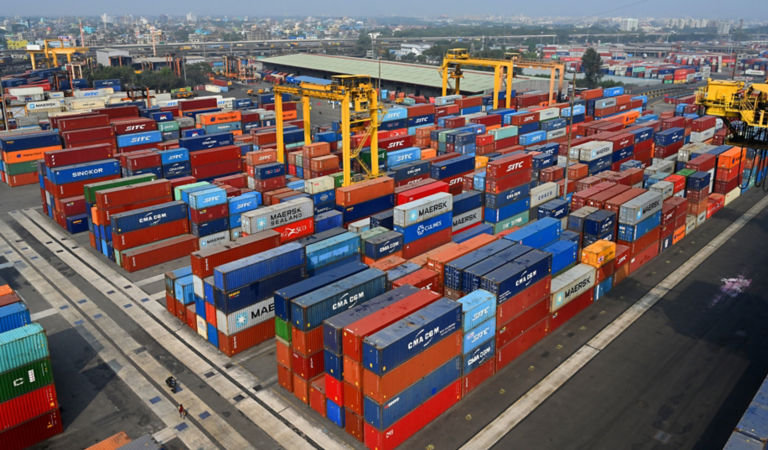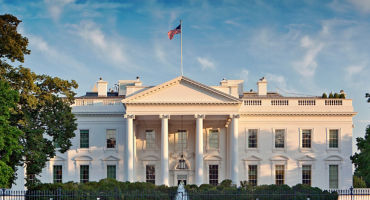Other ways China could retaliate
What else does China have in its retaliatory arsenal?
Weaponizing the yuan
While devaluing the yuan (CNY) is possible, the blowback would be significant. Historically during global crises, Beijing has opted for a stable exchange-rate policy rather than a “beggar thy neighbor” approach. A significant currency devaluation (10% – 20%) would not improve the economics for exporters and could trigger massive capital flight, confidence loss, a cycle of deflation, and accusations of currency manipulation — which would open the door to a wide range of additional sanctions, such as delisting, divestment, and asset freezes. That said, if the US-China relationship deteriorates further or if the US succeeds in pressuring the rest of the world to isolate China behind a “tariff wall,” weaponizing the CNY could become a viable option.
Weaponizing Treasury holdings
The recent tariff back-pedaling in response to the US bond market rout would suggest that China should keep hitting the US at this weak spot, but I believe Beijing is more likely to pile onto existing US Treasury market troubles rather than initiate an all-out bond war. Ultimately the US Federal Reserve (Fed) can absorb whatever Beijing would dump on the open market, making it an unwinnable battle for China. (There are also bigger questions on where and how China could redeploy the proceeds, particularly if it faced sanctions. Even if Beijing managed to repatriate the proceeds, it would face a major problem of how to anchor the domestic currency, which has long been backed by the safe-haven Treasury holdings on the government’s balance sheet. Sudden reanchoring would be hugely disruptive, creating a confidence crisis that destabilizes the macro environment.) Instead, Beijing could use its Treasury holdings as leverage to make a deal, with China committing to help fund new issuance, providing underpinnings for the US bond market.
Challenges with de-escalation
At this point, a quick retreat from the trade war will be difficult to do without inflicting a heavy toll on either (or both) economies. Further tariff hikes no longer make sense; the situation has become a test of economic resilience and pain tolerance. Any movement from here is up to two men with strong egos whose closest advisors have been unable to dissuade from the brinksmanship. Economic analysis can only help so far, and things will likely get worse before they get better.
One of the biggest problems, as I see it, is the lack of knowledge on both sides (including among investors) about the motivations of the other side. People in the US asking, “Why hasn’t Beijing caved and called the White House yet?” and people in China asking, “Why hasn’t the rest of the world dumped US dollars and Treasuries already?” don’t fully appreciate their adversary. This mismatch is a recipe for policy mistakes on both sides. The rapid-fire tit-for-tat response from China to raise its tariffs on US imports is one example. Beijing may have overplayed its hand and is now in an awkward position of being singled out by Washington. That said, this has probably just accelerated the journey to a showdown and, potentially, economic decoupling.
The structure of the US and Chinese economies are opposite versions of extreme imbalances, which used to cancel out, thanks to economic integration. No longer. After 2018, China had to find alternative sources of demand and the US alternative sources of supplies. Further testing of these efforts from here will expose vulnerabilities in the global supply chain.
Additional considerations
Monitoring micro signals
It is vital to monitor signals such as supply chain breakdowns, shipment delays, production disruptions, capital flow interruptions, volatility swings, and liquidity/solvency crises. These micro stresses can accrue to cause a macro “snap” moment (at which point policy tools may be ineffective), making it crucial to address them proactively.
Risks around Taiwan
The risk of the trade war spilling over into the strategic and military realm is rising, although it remains a tail risk. If the global tariff continues to erode US credibility and leadership, or if Washington faces deep economic trouble, the risk could increase. It is important to monitor these risks as they materialize.
Closing thought
The gloves are off in the US and China trade war, presenting significant challenges and uncertainties for investors to navigate. While Beijing has many tools at its disposal to offset the tariff shock, retaliate, and offer some concessions, the path to de-escalation remains complex and fraught with risks for the global economy. It is essential to monitor the evolving situation and be prepared for potential policy adjustments.




















10 reasons why China could be the next rerating story
Continue readingMultiple authors